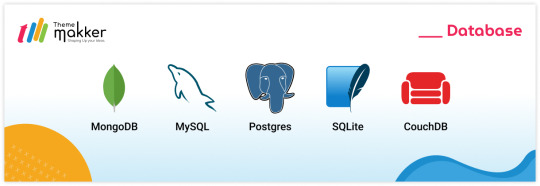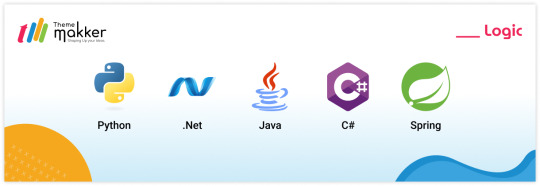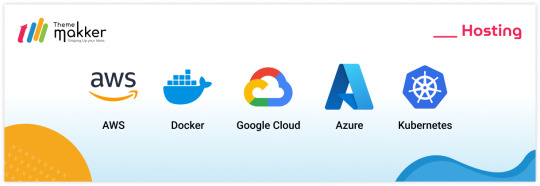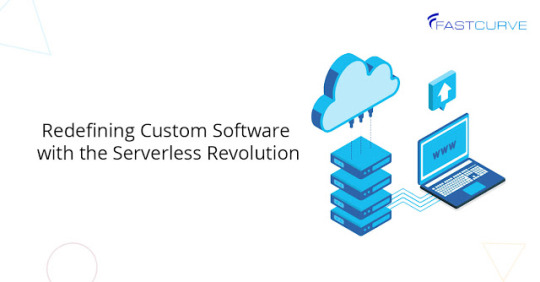#serverless computing
Text
#serverless platforms#serverless#serverless computing#benefits of serverless#serverless compute service
2 notes
·
View notes
Text
What is Serverless Computing?
Serverless computing is a cloud computing model where the cloud provider manages the infrastructure and automatically provisions resources as needed to execute code. This means that developers don’t have to worry about managing servers, scaling, or infrastructure maintenance. Instead, they can focus on writing code and building applications. Serverless computing is often used for building event-driven applications or microservices, where functions are triggered by events and execute specific tasks.
How Serverless Computing Works
In serverless computing, applications are broken down into small, independent functions that are triggered by specific events. These functions are stateless, meaning they don’t retain information between executions. When an event occurs, the cloud provider automatically provisions the necessary resources and executes the function. Once the function is complete, the resources are de-provisioned, making serverless computing highly scalable and cost-efficient.
Serverless Computing Architecture
The architecture of serverless computing typically involves four components: the client, the API Gateway, the compute service, and the data store. The client sends requests to the API Gateway, which acts as a front-end to the compute service. The compute service executes the functions in response to events and may interact with the data store to retrieve or store data. The API Gateway then returns the results to the client.
Benefits of Serverless Computing
Serverless computing offers several benefits over traditional server-based computing, including:
Reduced costs: Serverless computing allows organizations to pay only for the resources they use, rather than paying for dedicated servers or infrastructure.
Improved scalability: Serverless computing can automatically scale up or down depending on demand, making it highly scalable and efficient.
Reduced maintenance: Since the cloud provider manages the infrastructure, organizations don’t need to worry about maintaining servers or infrastructure.
Faster time to market: Serverless computing allows developers to focus on writing code and building applications, reducing the time to market new products and services.
Drawbacks of Serverless Computing
While serverless computing has several benefits, it also has some drawbacks, including:
Limited control: Since the cloud provider manages the infrastructure, developers have limited control over the environment and resources.
Cold start times: When a function is executed for the first time, it may take longer to start up, leading to slower response times.
Vendor lock-in: Organizations may be tied to a specific cloud provider, making it difficult to switch providers or migrate to a different environment.
Some facts about serverless computing
Serverless computing is often referred to as Functions-as-a-Service (FaaS) because it allows developers to write and deploy individual functions rather than entire applications.
Serverless computing is often used in microservices architectures, where applications are broken down into smaller, independent components that can be developed, deployed, and scaled independently.
Serverless computing can result in significant cost savings for organizations because they only pay for the resources they use. This can be especially beneficial for applications with unpredictable traffic patterns or occasional bursts of computing power.
One of the biggest drawbacks of serverless computing is the “cold start” problem, where a function may take several seconds to start up if it hasn’t been used recently. However, this problem can be mitigated through various optimization techniques.
Serverless computing is often used in event-driven architectures, where functions are triggered by specific events such as user interactions, changes to a database, or changes to a file system. This can make it easier to build highly scalable and efficient applications.
Now, let’s explore some other serverless computing frameworks that can be used in addition to Google Cloud Functions.
AWS Lambda: AWS Lambda is a serverless compute service from Amazon Web Services (AWS). It allows developers to run code in response to events without worrying about managing servers or infrastructure.
Microsoft Azure Functions: Microsoft Azure Functions is a serverless compute service from Microsoft Azure. It allows developers to run code in response to events and supports a wide range of programming languages.
IBM Cloud Functions: IBM Cloud Functions is a serverless compute service from IBM Cloud. It allows developers to run code in response to events and supports a wide range of programming languages.
OpenFaaS: OpenFaaS is an open-source serverless framework that allows developers to run functions on any cloud or on-premises infrastructure.
Apache OpenWhisk: Apache OpenWhisk is an open-source serverless platform that allows developers to run functions in response to events. It supports a wide range of programming languages and can be deployed on any cloud or on-premises infrastructure.
Kubeless: Kubeless is a Kubernetes-native serverless framework that allows developers to run functions on Kubernetes clusters. It supports a wide range of programming languages and can be deployed on any Kubernetes cluster.
IronFunctions: IronFunctions is an open-source serverless platform that allows developers to run functions on any cloud or on-premises infrastructure. It supports a wide range of programming languages and can be deployed on any container orchestrator.
These serverless computing frameworks offer developers a range of options for building and deploying serverless applications. Each framework has its own strengths and weaknesses, so developers should choose the one that best fits their needs.
Real-time examples
Coca-Cola: Coca-Cola uses serverless computing to power its Freestyle soda machines, which allow customers to mix and match different soda flavors. The machines use AWS Lambda functions to process customer requests and make recommendations based on their preferences.
iRobot: iRobot uses serverless computing to power its Roomba robot vacuums, which use computer vision and machine learning to navigate homes and clean floors. The Roomba vacuums use AWS Lambda functions to process data from their sensors and decide where to go next.
Capital One: Capital One uses serverless computing to power its mobile banking app, which allows customers to manage their accounts, transfer money, and pay bills. The app uses AWS Lambda functions to process requests and deliver real-time information to users.
Fender: Fender uses serverless computing to power its Fender Play platform, which provides online guitar lessons to users around the world. The platform uses AWS Lambda functions to process user data and generate personalized lesson plans.
Netflix: Netflix uses serverless computing to power its video encoding and transcoding workflows, which are used to prepare video content for streaming on various devices. The workflows use AWS Lambda functions to process video files and convert them into the appropriate format for each device.
Conclusion
Serverless computing is a powerful and efficient solution for building and deploying applications. It offers several benefits, including reduced costs, improved scalability, reduced maintenance, and faster time to market. However, it also has some drawbacks, including limited control, cold start times, and vendor lock-in. Despite these drawbacks, serverless computing will likely become an increasingly popular solution for building event-driven applications and microservices.
Read more
4 notes
·
View notes
Link
Serverless Computing is a robust development methodology that substitutes virtual machines with compute power as and when required and moves away after the usage is over.
2 notes
·
View notes
Video
youtube
Master the Google Cloud Run Serverless Service | Run Nodejs API in Cloud... Full Video Link - https://youtu.be/59jF_IaQHfE Check out this new video on the CodeOneDigest YouTube channel! Learn how to setup google cloud run #serverless service. Run #nodejs API in #cloudrun service. #codeonedigest @codeonedigest @googlecloud @GoogleCloud_IN @GoogleCloudTech @GoogleCompute @GooglecloudPL #googlecloud #googlecomputeengine #virtualmachine #nodejsapi
#youtube#google cloud#google cloud platform#cloud run#serverless computing#serverless#google cloud run service#cloud run service#cloud run serverless service#deploy nodejs api in google cloud run
0 notes
Text
Unraveling the 5 Layers of Software Development

In the realm of software development services, every application is built upon a foundation of interconnected layers, each serving a specific purpose in delivering functionality to end-users. Understanding these layers and the technologies that power them is crucial for developers aiming to create robust and efficient software solutions. In this blog, we'll explore the five key layers of software architecture: User Interface (UI), Application Programming Interface (API), Database (DB), Business Logic, and Hosting, along with examples of technologies commonly used in each layer.

User Interface (UI): The UI layer is what users interact with directly. It encompasses everything from the visual design to the user experience (UX). Technologies used in this layer focus on creating intuitive, responsive, and aesthetically pleasing interfaces. Some popular UI Design technologies include:
HTML/CSS/JavaScript: These front-end technologies form the backbone of web-based UIs. HTML defines the structure, CSS styles the elements, and JavaScript adds interactivity.
React.js/Vue.js/Angular: These JavaScript frameworks are used to build dynamic and interactive user interfaces for web applications.
Swift/Kotlin: For mobile application development, languages like Swift (for iOS) and Kotlin (for Android) are used to develop native user interfaces.

Application Programming Interface (API): The API layer acts as an intermediary between the UI and the business logic, enabling communication and data exchange. APIs define the endpoints and protocols through which different software components interact. Common technologies used in API development services include:
RESTful APIs: Representational State Transfer (REST) is a popular architectural style for designing networked applications. RESTful APIs use HTTP methods like GET, POST, PUT, and DELETE to perform operations on resources.
GraphQL: An alternative to REST, GraphQL provides a more flexible and efficient approach to querying and manipulating data. It allows clients to request only the data they need, reducing over-fetching and under-fetching.
Express.js/Django/Rails: Frameworks like Express.js (for Node.js), Django (for Python), and Rails (for Ruby) are commonly used to build web APIs quickly and efficiently.

Database (DB): The database layer is responsible for storing, retrieving, and managing data. It provides a persistent storage solution for an application's information. Various types of databases exist, including relational databases, NoSQL databases, and in-memory databases. Some popular database technologies include:
MySQL/PostgreSQL: Relational database management systems (RDBMS) like MySQL and PostgreSQL are widely used for structured data storage and management.
MongoDB: A popular NoSQL database, MongoDB is designed for storing unstructured or semi-structured data in JSON-like documents.
Redis: An in-memory data structure store, Redis is often used as a caching layer or for real-time data processing.

Business Logic: The business logic layer contains the application's core functionality and rules. It processes requests from the UI, interacts with the database, and performs the necessary operations to fulfill user actions. While business logic can be implemented in various programming languages, some technologies commonly used for this layer include:
Java/C#: Object-oriented languages like Java and C# are often chosen for building robust and scalable business logic components.
Node.js/Python: JavaScript (with Node.js) and Python are also popular choices, especially for applications requiring agility and rapid development.
Spring/.NET Core: Frameworks like Spring (for Java) and .NET Core (for C#) provide tools and libraries for building enterprise-grade business logic components.

Hosting: The hosting layer encompasses the infrastructure and environment where the application runs. It includes servers, cloud platforms, containers, and other deployment options. Popular hosting technologies and platforms include:
Amazon Web Services (AWS)/Microsoft Azure/Google Cloud Platform (GCP): These cloud service providers offer a range of hosting solutions, including virtual machines, containers, and serverless computing.
Docker/Kubernetes: Containerization technologies like Docker and orchestration platforms like Kubernetes provide efficient ways to package, deploy, and manage applications across different environments.
Heroku/Netlify/Vercel: These platforms offer simplified hosting solutions specifically tailored for web applications, providing features like continuous deployment, scalability, and managed infrastructure.
In conclusion, navigating the various layers of software architecture requires a comprehensive understanding of each layer's purpose and the technologies that power them. By leveraging the right technologies for UI, API, DB, logic, and hosting, developers can build robust, scalable, and maintainable software solutions that meet the needs of modern users and businesses.
#webdesign#mobileappdevelopment#appdevelopment#web developers#webdevelopment#youtube#apiintegration#thememakker#webdevelopmentcompany#hosting#database#serverless computing#api#uiuxdesign#ui#ux#aws#ror#docker#java#kubernetes#hire developers#webservices
0 notes
Text
Business Intelligence Solutions: Unleashing the Power of Managed Analytics

In today's dynamic business landscape, the effective utilization of data is pivotal for informed decision-making and sustained growth. Business Intelligence (BI) solutions have emerged as a cornerstone, offering organizations the ability to glean actionable insights from their data. This article explores the transformative impact of BI solutions and how managed analytics, coupled with outsourced IT management, is reshaping the way businesses harness the power of data.
1. Proactive IT Support and Managed IT Services:
BI solutions thrive in an environment supported by proactive IT services. Managed IT services, which include proactive support and maintenance, ensure the seamless operation of BI tools. This proactive approach not only enhances the reliability of analytics but also minimizes downtime, allowing businesses to make real-time decisions.
2. Advanced Analytics and Data Visualization Services:
Managed analytics encompass advanced analytics services that go beyond basic reporting. Data visualization services play a crucial role, translating complex data sets into visually appealing and understandable insights. This facilitates better communication and comprehension of data-driven findings across all levels of an organization.
3. Cloud Management Solutions and Migration Strategies:
The integration of cloud management solutions is a game-changer for BI. Cloud migration solutions offer scalability, flexibility, and cost-efficiency. Managed BI services leverage cloud optimization solutions, ensuring that businesses make the most of cloud resources while maintaining peak performance.
4. Data Science Solutions and Hybrid Cloud Integration:
BI solutions often involve intricate data science methodologies. Managed analytics extend to data science solutions, enabling organizations to employ predictive analytics and machine learning for more accurate forecasting. Hybrid cloud solutions provide the necessary infrastructure for hosting and processing data across different environments securely.
5. IT Consultation Services and Strategic Managed Services:
Strategic IT consultation services are instrumental in aligning BI strategies with overall business objectives. Managed services, including serverless computing and big data consulting, are designed to optimize the performance of BI tools, ensuring they adapt to evolving business requirements.
6. Cloud Consulting Services and Holistic Cloud Management:
BI solutions benefit from specialized cloud consulting services. These services guide organizations in selecting the most suitable cloud platforms and architectures for their BI needs. Holistic cloud management services oversee the entire cloud ecosystem, ensuring optimal performance and security.
In conclusion, the convergence of BI solutions and managed analytics is reshaping the way businesses interpret and leverage their data. With the right blend of outsourced IT management, advanced analytics, and cloud solutions, organizations can unlock the full potential of their data, gaining a competitive edge in today's data-driven era.
#it consultation services#managed service#serverless computing#big data consulting#business intelligence solutions#Scholarnest#Scholarnest Technologies#cloud consulting services#cloud management#cloud management services#data visualization services#managed it services#advanced analytics services#cloud management solution#cloud migration solutions#cloud optimization solutions#data science solutions#hybrid cloud solutions#outsourced it management#proactive it support
0 notes
Text

Serverless computing and the future of custom software
'Serverless Computing and the Future of Custom Software' provides a concise overview of the paradigm shift from traditional server-based architectures. Emphasizing benefits like simplified development, scalability, and cost-efficiency, the piece offers insights into the evolving landscape and the future possibilities of custom software development.
0 notes
Text
Serverless computing is not a new concept, but when you combine it with AWS Lambda and API Gateway, it becomes a game-changer. This powerful trio empowers developers to create and deploy applications without the hassle of server management.
Explore the world of serverless, where innovation, scalability, and simplified management take center stage. Also, you can experience the future of software development with serverless and unlock the full potential of your project.
1 note
·
View note
Text
Top 10 Web Technologies for Web Developers to Use In 2023
Summary:-
The web development industry is changing and emerging at every step. Web developers are continuously experimenting and implementing various technologies to create better user experiences on websites. Therefore, they must know the right web technologies to boost the website’s functionalities. Read on this blog about the top 10 latest web technologies for web developers that will help…

View On WordPress
#AI Integration#angular#Blockchain Technology#GraphQL#Headless CMS#Node#Progressive Web Apps (PWAs)#ReactJS#Serverless Computing#Web Assembly
0 notes
Text
0 notes
Text
Serverless Computing vs Cloud Computing | AntStack
Serverless computing may be advantageous for developers that wish to shorten their time to market and create lightweight, adaptable apps that can be quickly expanded or modified. Serverless designs will lower expenses for applications that have peaks and valleys in usage, with little to no traffic in between. Investing in a server or a group of servers that are always on and accessible, even when not in use, could be a waste of money for these applications. When necessary, a serverless setup will act immediately and incur no expenditures.

#Serverless Computing#Cloud Computing#Serverless Designs#Serverless Consulting#Best Serverless Platform
0 notes
Text
The Power of Serverless Computing: Practical Examples and Benefits
Discover the power of #ServerlessComputing, from cost efficiency to real-time analytics, with practical examples in this insightful article! Say goodbye to server maintenance and hello to #FaaS innovation. #CloudComputing #TechTrends
Serverless computing has revolutionized the way developers build and deploy applications. It offers a cost-effective and efficient alternative to traditional server-based architectures, providing businesses with the flexibility to focus on code and functionality rather than managing infrastructure. In this article, we will explore the concept of serverless computing, its advantages, and provide…

View On WordPress
#AWS Lambda#Azure Functions#benefits of serverless#chatbot development#Cloud Computing#Cloud Services#Cost Efficiency#event-driven architecture#FaaS#Function as a Service#Google Cloud Functions#infrastructure management#practical examples#real-time analytics#scalability#scheduled tasks#serverless computing#serverless platforms
2 notes
·
View notes
Text
Serverless computing has been gaining popularity as a powerful and efficient solution for building and deploying applications.
#serverless computing#serverless architecture#aws serverless architecture#serverless computing aws#serverless cloud computing
0 notes
Text
Wie man Infrastructure-as-Code in der Praxis umsetzt:
"Starten Sie Ihre Reise in eine Automatisierte Cloud-Infrastruktur: Ein Leitfaden zu Infrastructure-as-Code"
#InfrastructureAsCode #CloudInfrastruktur #Automatisierung #Modernisierung #CloudComputing #DevOps #IaC
Infrastruktur-as-Code (IaC) bietet Unternehmen und Entwicklern die Möglichkeit, komplexe Cloud-Infrastrukturen zu automatisieren. In der Vergangenheit war dies ein mühsamer Prozess, der viel Zeit und Mühe erforderte, aber heutzutage können Teams Ihre Infrastruktur viel schneller bereitstellen. Durch das Erstellen eines Code-basierten Konfigurationssystems können Entwickler ihre Cloud-Umgebung…
View On WordPress
#Automatisierung#Cloud-Plattformen#Compliance und Sicherheit#Konfigurationsmanagement#Orchestrierung#provisionierung#Serverless Computing#Skripting#Updates.#Verwaltung und Monitoring
0 notes
Text
5 Serverless Computing Misconceptions to avoid in 2023

The Software Development Life Cycle is part of everyone’s life today, from developers to end users. For the same reason, DevOps and Cloud Computing solution providers are exploring the soundbites concerning serverless computing. As serverless computing is evolving rapidly, it’s evident that people unaware of the technology provide a misguided assumption.
DevOps and Cloud Computing are influencing the world of tech globally. Several studies have been published on the internet that shed light on familiar and outdated misconceptions. Given that these misconceptions are quite a buzz in the realm of development, it does create myths related to technologies that don’t exist. However, these existing myths suggest serverless computing is fresh out of the oven.
Serverless computing and its application in the real world are constantly growing, and at times, it’s challenging to keep up with it. For people who are trying to leverage serverless computing to serve the needs of businesses better, this article is for them. Let’s bust some myths and misconceptions about serverless computing. Learn more: https://cloudzenix.com/5-serverless-computing-misconceptions-to-avoid-in-2023/
0 notes
Text
Future-Proofing Your Business: The Role of Managed Services in Tech Evolution

In the ever-evolving landscape of technology, businesses are increasingly turning to managed services to stay ahead of the curve and future-proof their operations. As the demands on IT infrastructure grow, leveraging outsourced IT management becomes not just a choice but a strategic necessity. This article explores the pivotal role of managed services in driving tech evolution and ensuring the resilience and agility of your business.
The Foundations of Managed Services:
1. Outsourced IT Management:
Managed IT services involve outsourcing the responsibility for maintaining, anticipating, and managing a company's IT systems. This approach allows businesses to tap into the expertise of external providers, freeing up internal resources to focus on core business functions.
2. Proactive IT Support:
Unlike traditional reactive IT support, managed services operate proactively. Providers actively monitor systems, identify potential issues before they escalate, and implement preventive measures, ensuring a more stable and reliable IT environment.
Advanced Tech Solutions:
3. Data Visualization and Advanced Analytics:
Managed services extend beyond basic IT support, offering specialized solutions such as data visualization and advanced analytics services. This empowers businesses to derive meaningful insights from their data, enabling better decision-making and strategic planning.
4. Cloud Management and Migration Solutions:
Cloud computing is at the forefront of tech evolution, and managed services play a crucial role in facilitating seamless cloud management and migration solutions. Whether it's adopting a hybrid cloud approach or optimizing existing cloud infrastructure, managed services ensure efficient and secure cloud operations.
5. Data Science Solutions:
The integration of data science solutions into managed services allows businesses to harness the power of predictive analytics, machine learning, and artificial intelligence. This not only enhances operational efficiency but also opens avenues for innovation and competitive advantage.
6. Hybrid Cloud Solutions:
Managed services excel in providing hybrid cloud solutions, allowing businesses to balance the benefits of both public and private clouds. This flexibility enables organizations to adapt to changing needs, ensuring optimal performance and scalability.
Strategic IT Consultation:
7. IT Consultation Services:
Managed service providers offer strategic IT consultation services, guiding businesses through technology decisions aligned with their goals. From serverless computing to big data consulting, these consultations ensure that IT infrastructure is not just maintained but strategically aligned with business objectives.
8. Business Intelligence Solutions:
Harnessing business intelligence solutions through managed services enables organizations to turn data into actionable insights. This facilitates informed decision-making, driving efficiencies and fostering a data-driven culture.
9. Cloud Consulting Services:
Cloud adoption is a transformative journey, and managed services provide crucial support through cloud consulting. This includes planning, implementation, and ongoing management, ensuring businesses leverage the full potential of cloud technologies.
The Evolutionary Edge:
10. Cloud Management Services:
As businesses increasingly rely on cloud technologies, managed services offer specialized cloud management services. This includes optimizing resources, ensuring security, and implementing best practices for efficient cloud operations.
In conclusion, future-proofing your business in the rapidly evolving tech landscape necessitates a strategic approach to IT management. Managed services not only provide essential IT support but also act as catalysts for innovation and technological advancement. By embracing outsourced IT management, businesses can tap into a wealth of expertise, leverage advanced tech solutions, and receive strategic guidance, ensuring they are well-prepared for the challenges and opportunities that lie ahead. The future belongs to those who proactively evolve, and managed services are the key to staying ahead of the curve.
#it consultation services#managed service#serverless computing#big data consulting#business intelligence solutions#cloud consulting services#cloud management#cloud management services#data visualization services#managed it services#advanced analytics services#cloud management solution#cloud migration solutions#cloud optimization solutions#data science solutions#hybrid cloud solutions#outsourced it management#proactive it support
1 note
·
View note